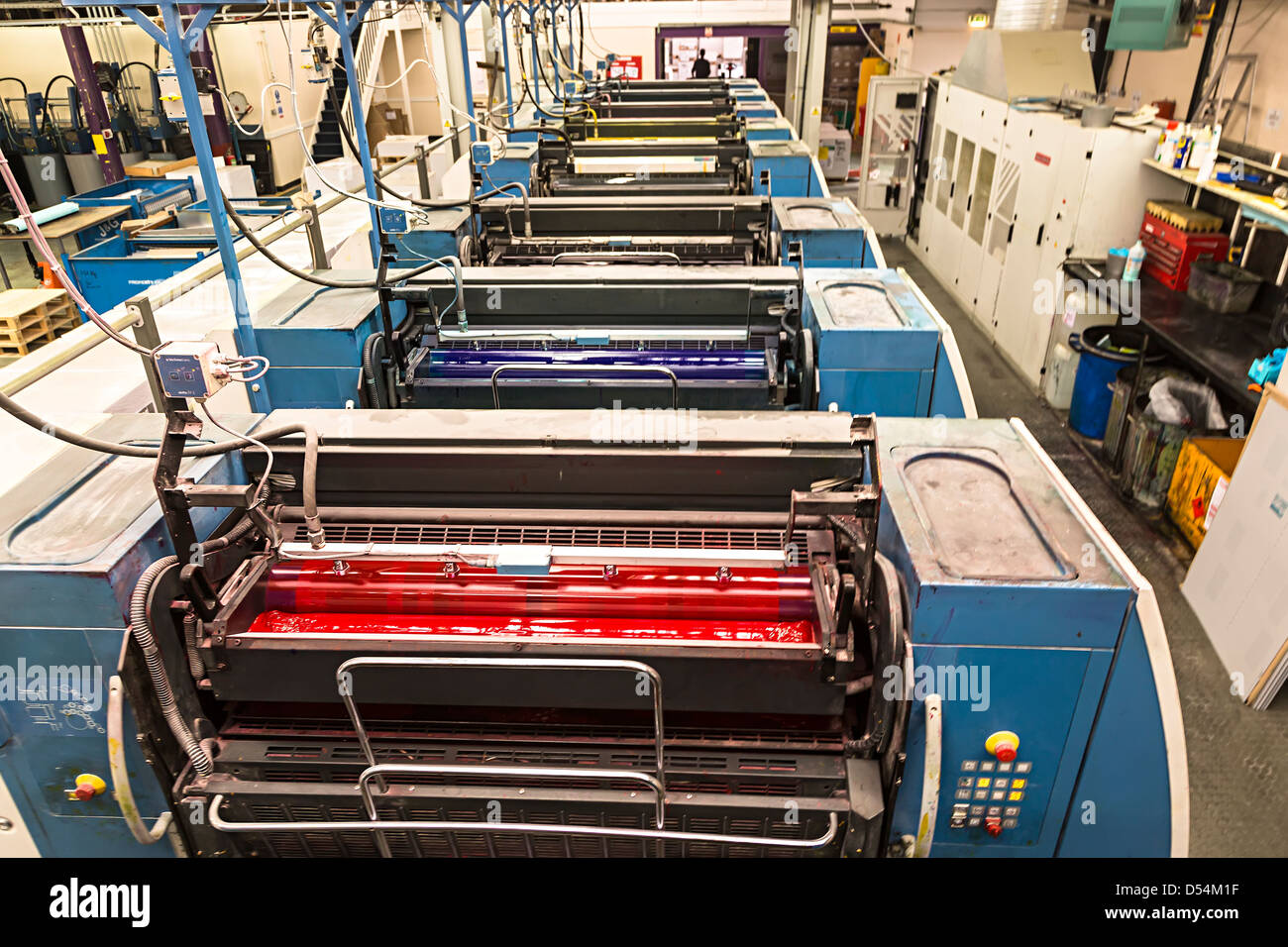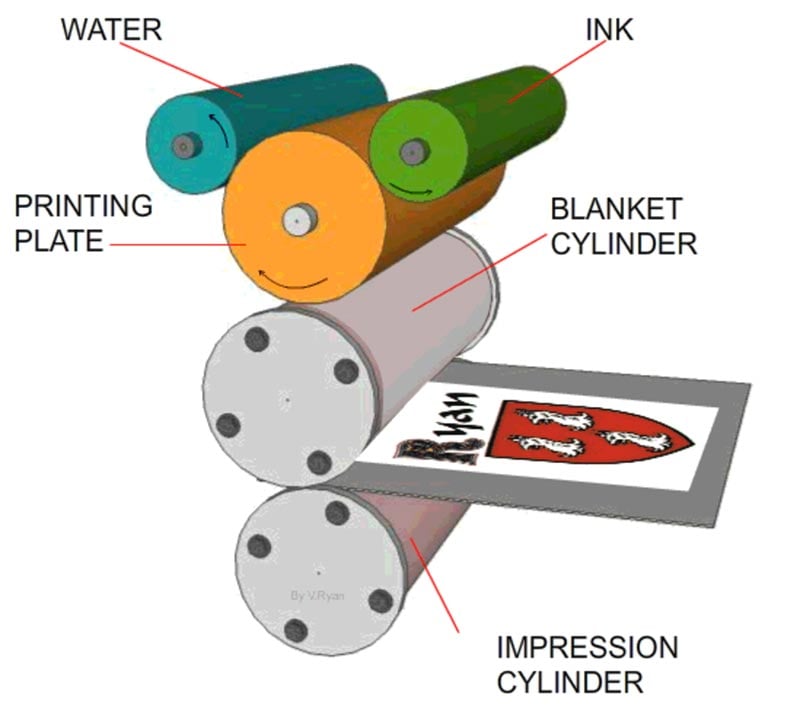A Comprehensive Overview to Understanding Litho Printing Strategies
The globe of litho printing, a technique originating from the late 18th century, is a remarkable mix of history, science, innovation and art. Stay with us as we journey into the fascinating world of litho printing.
The Historical Development of Litho Printing
The historic trajectory of litho printing, a crucial innovation in the realm of communication, is a fascinating story of human resourcefulness. Birthed in the late 18th century by Alois Senefelder, this strategy was originally an economical technique of publishing theatrical works. Lithography, originated from the Greek words for 'rock' and 'to create', made use of a smooth rock surface area to move pictures onto paper. The process advanced with the arrival of the rotating press, which greatly increased productivity (litho printing). In the 20th century, the development of balanced out lithography transformed the industry, permitting automation of top notch prints. Each phase of litho printing's development showcases humankind's ruthless quest of performance and top quality in aesthetic communication.
Decoding the Scientific Research Behind Litho Printing Inks
Moving on in the expedition of litho printing methods, the focus currently moves to the scientific research behind litho printing inks. The composition of these inks, their drying procedure, and shade mixing strategies develop the foundation of this complex art form. Comprehending these aspects is crucial to understanding the craft and accomplishing the desired print outcomes.
Composition of Litho Inks
In lithographic printing, the basic duty of litho inks can not be overemphasized. The structure of litho inks differs depending upon its objective, however usually, they include 2 main components - pigments and cars. Pigments, the color-providing elements, are carefully ground bits suspended in the automobile, a fluid that lugs the pigment onto the printing surface. The automobile is a complicated mixture of solvents, materials, and oils, which affect the ink's drying out time, adhesion, and gloss. Furthermore, different additives exist to improve particular properties like flow, drying out, and resistance to environmental effects. Each element plays a vital part in the final print's top quality, making the exact formula of litho inks a complex science.
Ink Drying Process
From the composition of litho inks, interest transforms to the remarkable procedure of ink drying out. Two primary approaches are made use of in litho printing: oxidative drying out and absorption. Absorption, on the other hand, entails the ink seeping right into the paper fibers, which is a much faster process but can lead to much less vivid shades.
Shade Combining Techniques
While the drying out process plays a vital duty in litho printing, the science of color blending techniques holds equal significance. The science behind litho printing inks additionally takes into account the transparency of the ink, which impacts exactly how colors overlay and mix.
The Art and Style Elements in Litho Printing
Litho printing takes a breath life into art and style through its distinct elements. Litho printing suits a range of shades, allowing musicians to produce dynamic and vibrant prints. This combination of precision and convenience makes litho printing a preferred choice for Get More Info numerous musicians and developers.
Modern Applications of Litho Printing Methods
Litho printing techniques have actually located considerable usage in the modern-day commercial industry. Its impact and importance continue to expand with the arrival of new developments and modern technologies in the field. This section will discover these modern applications and the transformative role they play in the printing industry.
Business Litho Printing Makes Use Of
In today's electronic age, one could question the importance of typical printing techniques. Litho printing continues to be a vital component of the commercial industry. High-volume printing tasks, such as the production of books, newspapers, and packaging, rely upon litho printing for its capacity to deliver premium photo top quality and expense effectiveness. The process, which entails moving a tattooed image from a plate discover here onto a rubber covering and after that to the printing surface, uses unrivaled uniformity. This makes it suitable for jobs needing a large print run. Litho printing also gives a wide color range, above that of electronic printing. This makes it the best selection for projects that require dynamic, top quality color reproduction.
Technologies in Litho Printing
Pushing the borders of traditional methods, modern innovations have sustained a host of advancements in litho printing. One noticeable growth is electronic litho printing, which incorporates the virtues of electronic modern technology with litho's top quality result. These innovations underscore the enduring relevance of litho printing in the modern globe.
Exploring the Process of Litho Printing: Action by Action

Challenges and Solutions in Contemporary Litho Printing

Despite the precision and tradition that litho printing proudly promotes, it is not without its collection of modern obstacles. Digital litho printing permits for cost-efficient brief runs and very easy personalization, resolving the problem of variable data. Therefore, while there are challenges, the litho printing industry is proactively adjusting to fulfill them head-on, guaranteeing its importance in the future.
Verdict
In verdict, litho printing, with its abundant background and scientific complexities, holds a significant area in the print industry. The future of litho printing pivots on its ability to adjust to these altering needs, affirming its long-lasting value in an advancing market.

Comments on “The Perks of Using litho printing for Marketing Materials”